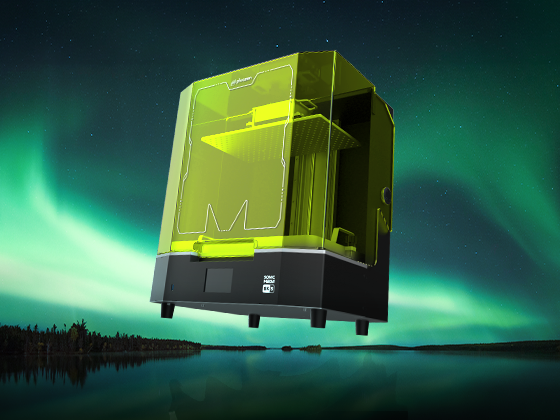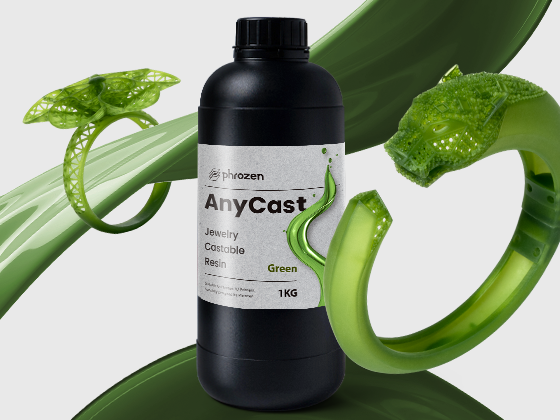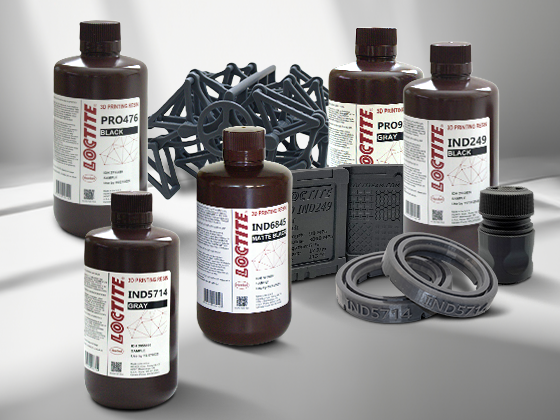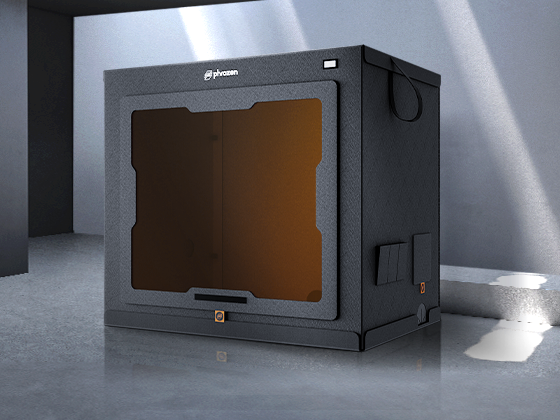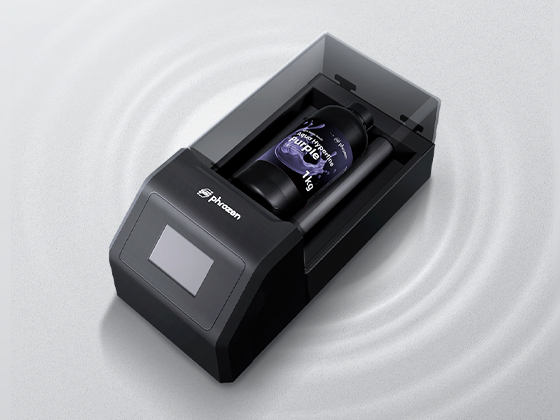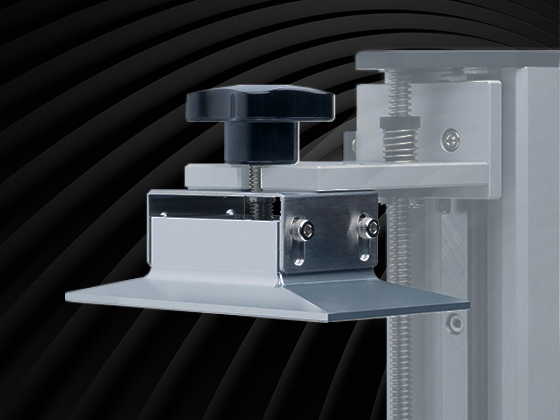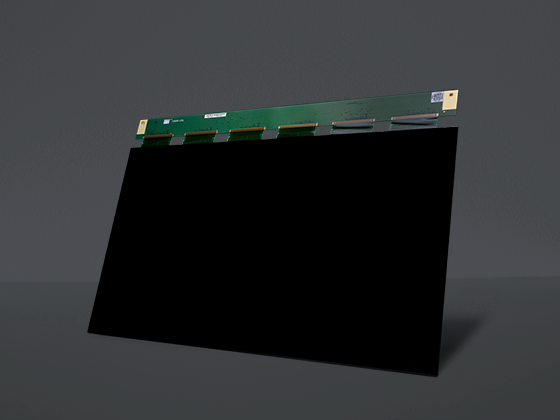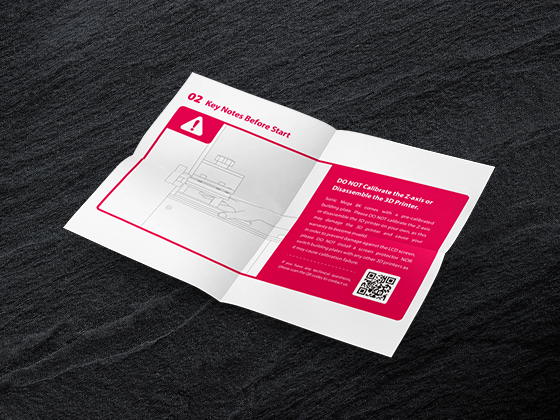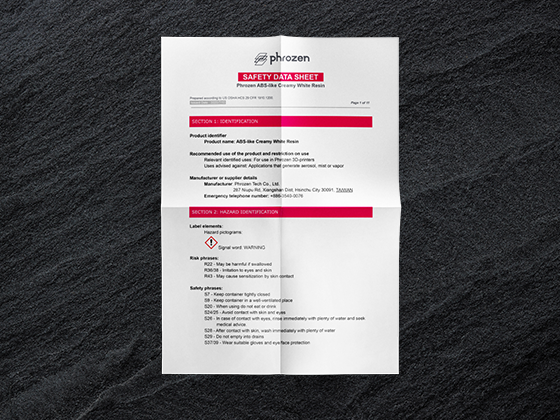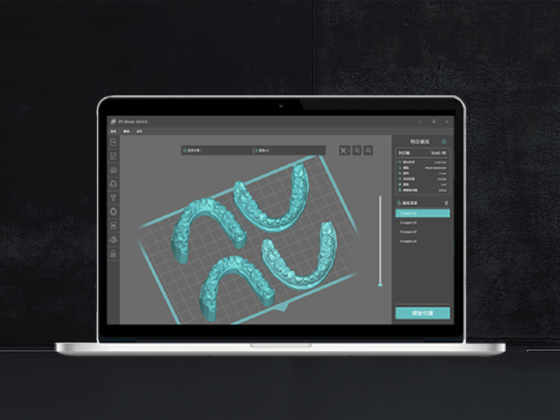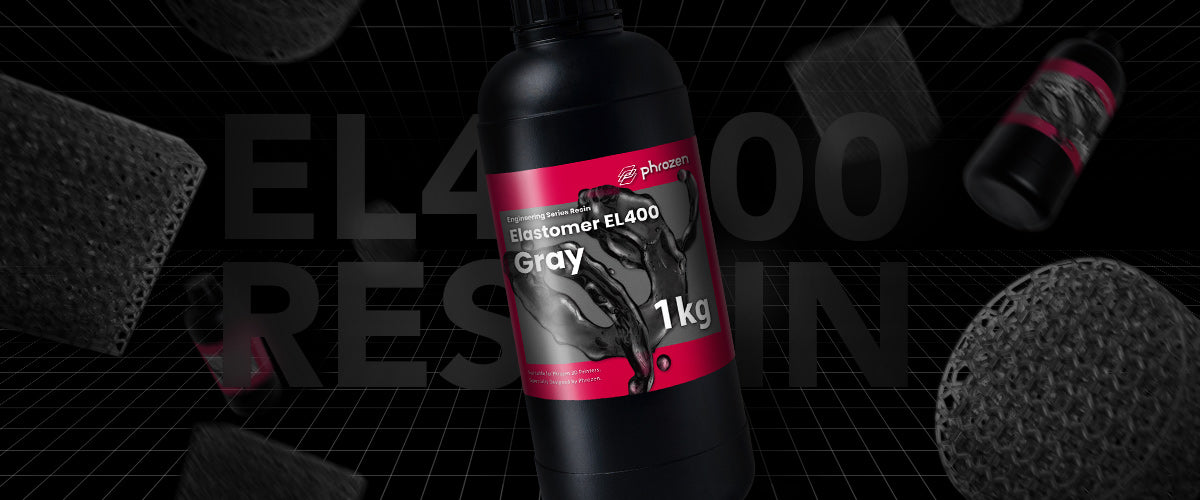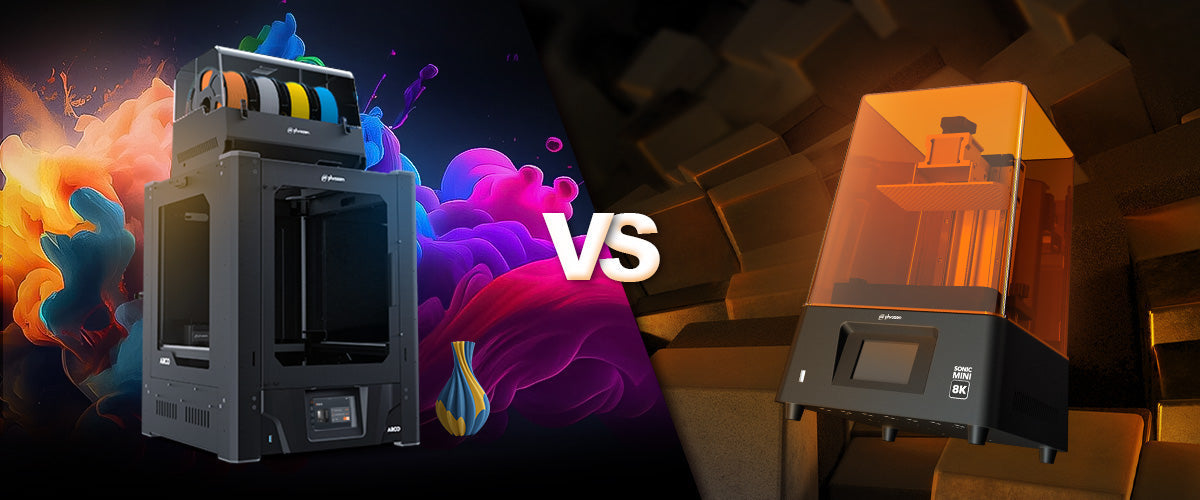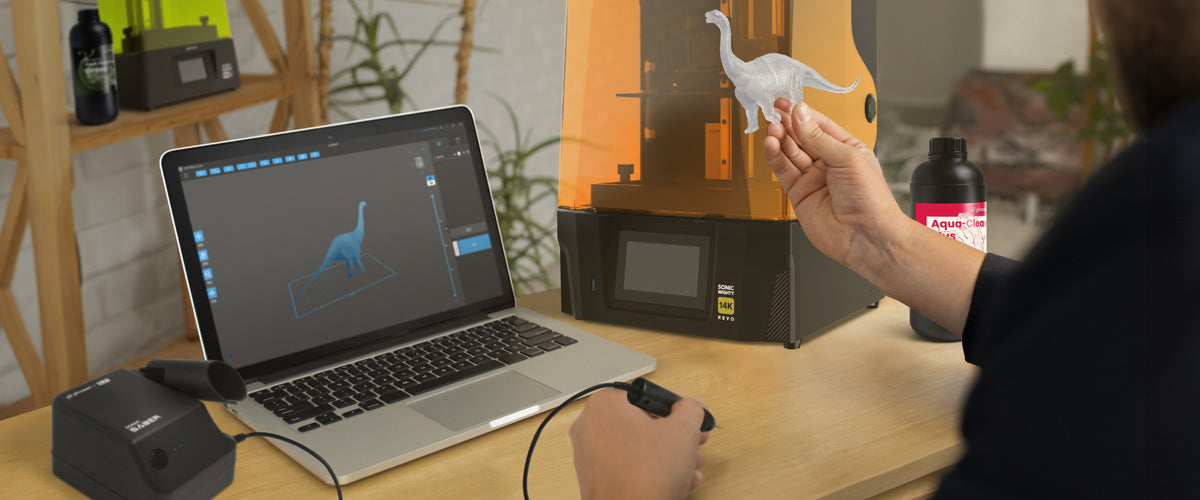As 3D printing continues to revolutionize industries from manufacturing to the arts, choosing the right resin becomes crucial for achieving the desired results in your projects.
Enter Phrozen EL400 Resin, a cutting-edge material engineered for both flexibility and durability. Whether you're a professional pushing the limits of what's possible with 3D printing or a hobbyist looking for the next big innovation, this guide will walk you through everything you need to know about Phrozen EL400 Resin.
What Is Phrozen EL400 Resin?
Phrozen EL400 is a high-performance elastomer resin designed to create rubber-like models that stand up to the rigors of both creative and industrial applications.
This resin is known for its exceptional elasticity, impressive tear strength, and ability to return to its original shape after deformation, making it ideal for producing prototypes and functional parts that require durability and flexibility.
Why Choose Phrozen EL400 Resin?

The EL400 is incredibly elastic and resilient.
Ultra-High Elasticity
With an astounding 391% elongation at break, Phrozen EL400 offers rubber-like flexibility combined with robust hardness, making it perfect for intricate designs and functional prototypes.
Excellent Resilience
The EL400’s 50-55% Bayshore rebound rate ensures that your printed models will bounce back to their original shape even after repeated deformation, making it ideal for long-term use and durability testing.
Superior Tear Strength
Models printed with EL400 can withstand over 60,000 cycles at 23°C, boasting a tear strength of 39.1kN/m. This makes it an excellent choice for creating products that need to endure wear and tear, such as bicycle seats and shoe cushions.
Applications of Phrozen EL400 Resin
Phrozen EL400 is versatile and robust, making it suitable for a wide range of applications:
Durable Prototypes: Perfect for creating prototypes that need to withstand repeated testing and use.
Industrial Parts : An excellent alternative to foam and TPU in industrial processes, thanks to its high tear strength and elasticity.
Consumer Goods: Ideal for products requiring high durability, such as bicycle seats, shoe cushions, and other items that must endure repeated bending and stress.
Printing with Phrozen EL400 Resin
To achieve the best results with Phrozen EL400, it’s essential to follow the recommended printing guidelines. Here’s what you need to know:
Recommended Printing Settings
- Layer Thickness: 100 µm
- Wall Thickness: ≥ 1.5 mm
- Lifting Speed: 120 - 150 mm/min
- Support Thickness: 1.0 mm or ≥ 1.2 mm
Pro Tips:
- Printing on the Build Plate: To minimize deformation, it’s recommended to print models directly on the build plate. If supports are necessary, ensure that gaps are wide enough for the resin to cure properly.
- Adjusting Speed: Reducing lifting and return speeds while increasing rest time can lead to more successful prints, especially for complex models.
Post-Processing Phrozen EL400 Resin
Proper post-processing is critical to maximizing the performance of your EL400 printed models. Here’s how to do it:
Cleaning and Drying
- Initial Wash: Clean your printed models using 95% alcohol in a Phrozen Washing Station. Avoid prolonged soaking to prevent surface damage.
- Drying: After cleaning, place your models in a cool, ventilated area away from sunlight, or use the drying function in the Phrozen Curing Station.
Post-Curing
- Glycerin Soak: Submerge your models in glycerin and post-cure them for about 60 minutes. This step helps enhance the mechanical properties, especially tensile and tear strength.
- Final Cleaning: Once post-curing is complete, rinse the models with clean water and let them dry in a cool, ventilated space for at least 60 minutes. Avoid exposure to direct light during this process.
- Optional Thermal Post-Cure: For even greater durability, perform an additional thermal post-cure at 80°C for 2 hours. This step can improve the mechanical properties but may reduce ductility.
Robust Performance for Industrial Standards
Developed to meet rigorous industrial standards, Phrozen EL400 Resin offers an ideal alternative to traditional materials like foam and TPU. Its high tear resistance and elasticity make it suitable for producing durable and reliable components that can withstand the demands of industrial applications.
Real-World Applications and Industry Feedback
Phrozen EL400 Resin has already made waves at prominent industry events like Eurobike, Rapid+TCT, and the Design Manufacturing Solutions Expo Tokyo. Attendees and industry professionals have praised its innovative properties and potential applications, signaling its promising future in various sectors.
Conclusion
Phrozen EL400 Resin is a game-changer for those who need flexible, durable, and detailed prints. By following the tips and guidelines provided here, you can master the use of this innovative resin and unlock new possibilities in your 3D printing projects. Whether you’re crafting prototypes, consumer goods, or industrial components, Phrozen EL400 Resin offers the performance and reliability you need.
If you want to purchase this powerful resin, check the links below:


